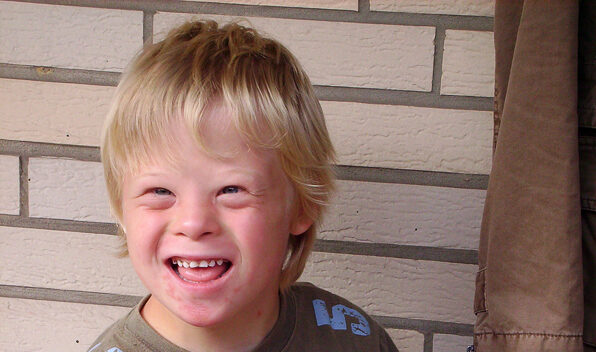If you are worried about your child’s condition, you might want to read more about Down syndrome and Mongoloid. These two disorders have many similarities. In fact, they are both caused by the same gene. There are several possible causes for Down syndrome. In addition to genetic defects, other conditions can result in a child being born with one or more of them. In this article, you will learn how to distinguish between the two.
Mongoloid
Although the terms “down-syndrome” and “mongoloid” are very similar, they are very different. Down syndrome is a genetic disorder, and mongoloid is a term that was first used in the 1960s to refer to children with Down syndrome. The original organization for this condition was called the Mongoloid Development Council. Kay McGee was one of the first parents to be involved in such an organization, and her daughter was diagnosed with Down syndrome in 1975. She was instrumental in forming the organization, serving as the Executive Secretary from 1960 until 1975. At that time, women were rarely seen as presidents, and she was considered to be a leader.
During this time, the term “mongoloid” was frequently used to refer to people with Down syndrome. It was largely associated with the Mongoloid race, which historically inhabited a lot of asians. However, in 1961, a French geneticist named Jerome Lejeune published a pseudoscientific book that suggested that people with Down syndrome had genetic traits that came from the Mongoloid race. In response to this controversy, Down’s grandson wrote a letter to The Lancet that made the term “mongoloid” a permanent part of the scientific literature.
Down syndrome
Down syndrome was originally called “Mongolism” and was first described by John Langdon Down in 1866. The term wasn’t officially adopted until the early 1970s, when Jerome lejeune discovered an extra chromosome. Shortly afterward, chromosome studies confirmed the diagnosis. Today, people with Down syndrome are diagnosed with trisomy 21 and exhibit physical growth delays and characteristic facial features. IQ is low in children with Down syndrome, although young adults with the disorder have an IQ that is comparable to an average child.
Down’s original classification of human populations based on ethnic origins was controversial. He said that the term “mongol” was a derogatory term. However, the People’s Republic of Mongolia appealed to the World Health Organization and suggested that the term be replaced. The World Health Organization agreed, and the term was soon replaced. Despite the controversy surrounding the term, it was still used in the UK until the early 1980s.
Hypotonia
Down syndrome is a genetic disorder characterized by low muscle tone at birth. Individuals with Down syndrome may move awkwardly and exhibit a lack of muscle tone in their early years. The condition is associated with intellectual and developmental delays. People with Down syndrome may experience a range of physical and mental challenges, ranging from developmental delays to intellectual disability. However, there are certain symptoms that may signal a condition such as hypotonia, including a lack of muscle tone, and intellectual difficulties.
In early childhood, children with Down syndrome are smaller than peers their age, and often display hypotonia. Physical therapy and age may improve hypotonia, and children with Down syndrome tend to achieve developmental milestones later than typically developed kids. While hypotonia does not necessarily lead to developmental delays, it may affect feeding or learning skills. Despite its benefits, children with Down syndrome often struggle with a variety of tasks.
Sleep apnea
People with Down syndrome and enlarged tonsils and adenoids are at greater risk for developing sleep apnea. Patients with this disorder often have enlarged tonsils and adenoids that block the airway while asleep. Surgery may be necessary to correct the problem, but non-surgical solutions are often effective. Surgical treatment of enlarged tonsils and adenoids is the first line of treatment.
Obstructed airways are a major cause of sleep apnea. The blocked airway can cause severe breathing problems that can affect the development of a person’s brain, body development, and memory. Apnea can even result in pulmonary hypertension and cor pulmonale, which is an underlying condition of the right heart. In addition, Down syndrome patients may have a malaligned upper spine, which is called atlantoaxial instability, which increases the risk for spinal cord injury.
Immune system problems
The term “mongoloid” has been in use since the 19th century, when W. Bertram Hill published Mongolism and its Pathology. In 1961, Lionel Penrose used the term in a book. In 1924, F. G. Crookshank published a pseudoscientific book in which he suggested that Down Syndrome was caused by genes from the Mongoloid race. A song titled “Mongoloid” was also released by the rock band Devo. The song depicts a man with Down syndrome.
In the 1950s, Down syndrome was called Mongolism. Its name was misunderstood until French geneticist Jerome Lejeune discovered its genetic cause. He said that it was caused by an extra copy of chromosome 21. This was the first known case of Down’s syndrome. The second case involved the translocation of chromosome 21 between one member of Group 21-22 and a chromosome from Group 13-15.
Facial features
Down syndrome is a rare genetic disorder with distinct physical features. Most people with the condition have a flat face, a narrow palate, and clinodactyly. They also have a short neck and extra skin on the nape of the neck. While Down syndrome can be inherited, most people affected by the condition are typically mild to moderately handicapped. These individuals are generally short in stature and have short legs.
In the past, people with Down Syndrome were referred to as Mongolian idiots and “mongolism.” This term came from a myth that these people resembled Mongolians. Nowadays, the condition is known as trisomy 21 and is associated with physical growth delays and characteristic facial features. Although Down Syndrome is associated with low intellectual ability, the average IQ of a young adult with the disorder is about the same as a child with normal IQ.

